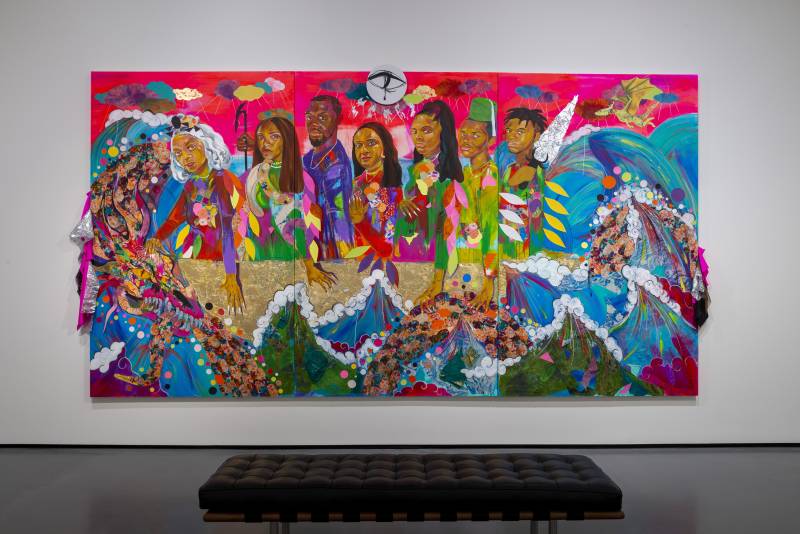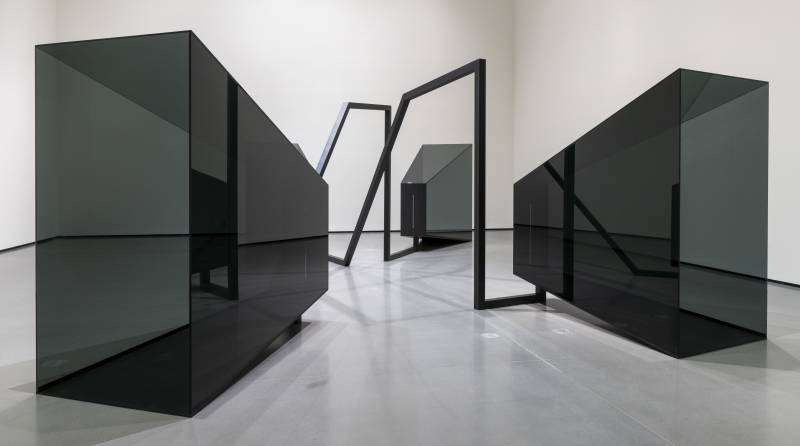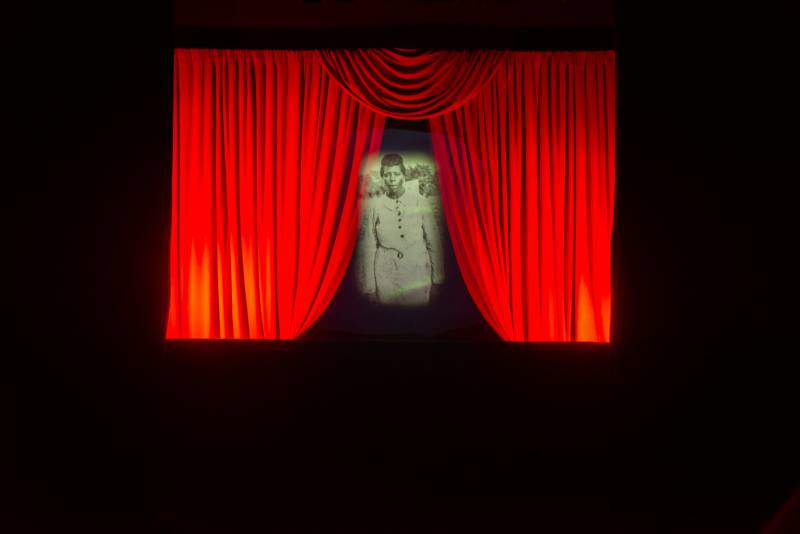My mother was six years old when her family migrated west from Tallahassee, Florida in 1954. She was one of approximately six million Black people who moved out of the American South to Western, Northern and Midwestern states in the era known as the Great Migration. My grandfather, a physician who had limited opportunities in the Jim Crow South, moved the family to Porterville, California in the Central Valley. They lived in Palo Alto for five or so years before ultimately settling in Southern California.
Those facts of my family’s migration story were front of mind as I walked through the new exhibition A Movement in Every Direction: Legacies of the Great Migration, on view at the Berkeley Art Museum and Pacific Film Archive through Sept. 22, 2024.
Translating this epic American story of the Great Migration, which has so many facets and truths (and warranted 622 pages from scholar Isabel Wilkerson), into a walkable, visual experience is a feat. A Movement in Every Direction, which was co-organized by the Mississippi Museum of Art and the Baltimore Museum of Art and features 12 artists, beautifully showcases how this is a shared history for millions, with very intricate, individual stories.
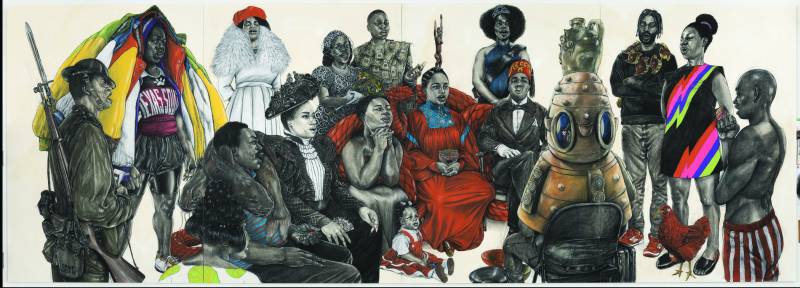
Robert Pruitt’s large-scale charcoal drawing A Song for Travelers (2022) feels emblematic of that intricacy — both in the craft of the piece and the story it tells. Pruitt draws inspiration from his personal archive (a family reunion photo from the 1970s) and the historical archive of his hometown Houston to depict a community of past and present-day figures offering gifts to a traveler.
The longer you look at this piece, the more detail is revealed. Noticing each gift elicits the bright-eyed feel of answering the question “Where’s Waldo?” It’s a feast for the eyes and the spirit, as one can imagine sitting in the traveler’s seat, receiving the support of the ancestors and community members.
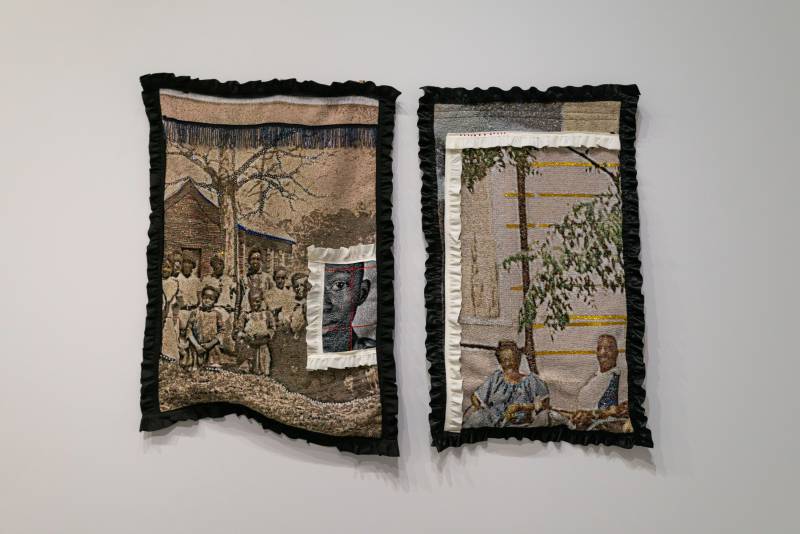
The intricacy of stories is also evident in the detailed stitching of Akea Brionne’s tapestries for her installation An Ode to (You)’all (2022), which reflects on Black maternal family structures through the lives of her great-grandmother and great-aunts. The textiles are eye-catching. By transforming old family photographs into jacquard weavings, which she bedazzles with sparkly embellishments, Akea Brionne honors the women who helped her family move north from Mississippi.
